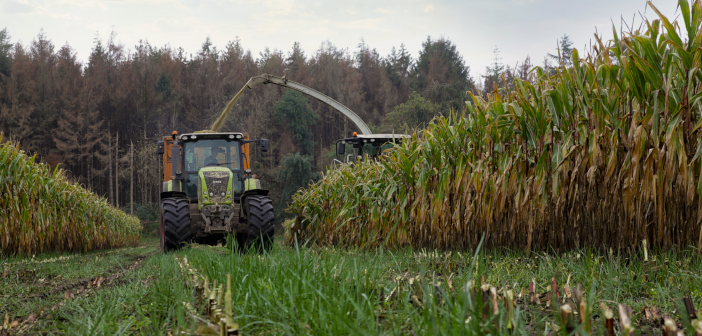Grass and soil sustainability experts, Barenbrug, have launched a new crop-specific green cover option for under-sowing in maize, promising better harvest performance and improved soil drainage.
Following successful trials in UK conditions during 2020, Barenbrug states that its Proterra Maize, based on the company’s tall fescue technology, offers a quick and easy solution for establishing under-sown cover in forage or AD maize, while also addressing worries about main crop competition.
“Issues with soil erosion and nutrient leaching, coupled with damage to the soil structure at harvest and the knock-on effects on soil health, have spurred considerable interest in under-sowing maize,” said Roger Bacon, north of England regional manager with Barenbrug and the company’s maize specialist.
“Some water companies have even introduced their own incentives or subsidies to reduce run-off in water-catchment areas,” he pointed out, adding that there’s an expectation that green manures or cover crops may soon become a mandatory practice in maize cultivation, possibly under ELMs
Specially developed as a green cover crop for maize, Proterra Maize is said to offer a deep-branched rooting system, which maintains soil structure and health post-harvest and reduces soil erosion and nutrient leaching, as well as soaking up nutrients from a greater volume of soil to allow carbon to sequestered much deeper within the profile.
“Research shows that carbon sequestered in the top 20cm of the soil is much less stable than that found at greater depths,” explained Mr Bacon.
He acknowledged that some growers have been reluctant to adopt under-sown solutions, citing concerns that a fast-growing cover crop could rob the main crop of critical sunlight, moisture and minerals.
“In selecting and developing this variety, we’ve opted for traits that favour rapid germination but far slower growth post-emergence. This gives it time to develop its deep, robust root system while presenting little competition for the maize,” he pointed out.
The deep rooting system also ensures that the soil has a higher bearing capacity, allowing growers to harvest when the crop is ripe without concerns over structural damage. Higher levels of soil biomass will also help improve performance in the following crop.
Further research throughout 2021 will also examine the performance differences between blends of Proterra Maize and the potential applications.
“What we’ve seen so far is that performance is variety specific,” said Mr Bacon. “This confirms anecdotal evidence from early adopters, indicating that it’s not just a matter of buying any tall fescue, as not all of them work.
“With Proterra Maize, we’re trying to help growers have more confidence in the practice of under-sowing, allowing them to realise some or all of its valuable benefits on their farms with a product that’s designed for the task at hand.”
More information is available at www.barenbrug.co.uk


